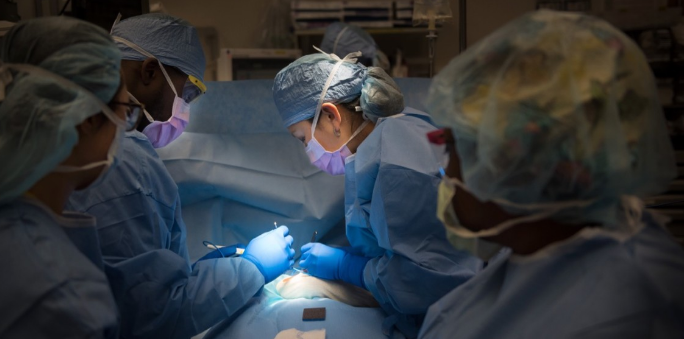A Day in the Life of a Neurosurgeon: Behind the Scene
The life of a neurosurgeon is one of extreme responsibility, precision, and dedication. Renowned for their prowess in treating complex conditions affecting the brain, spine, and nervous system, neurosurgeons are tireless workers in saving lives and improving the quality of life for their patients. But what does a typical day look like for these highly skilled professionals? This article goes behind the scenes to explore challenges, triumphs, and demands of a neurosurgeon’s day.
Morning: Early Starts and Critical Planning
For many neurosurgeons, the day starts well before the sun rises. The morning routine will set the stage for a demanding schedule that needs one’s utmost focus and meticulous planning.
1. Pre-Surgical Preparation
The day typically begins with reviewing the patients scheduled to go to surgery. This involves:
- Medical Records Analysis: Reviewing scans such as MRI or CT, laboratory test results, and patient history to confirm the surgical plans.
- Team Briefings: Consulting anesthesiologists, nurses, and other surgical team members to go over the procedure at hand and areas of concern in the course of the operation.
- Mental Preparation: Neurosurgery requires focus. Many surgeons take a few minutes to compose themselves for the life-and-death operations that lie ahead.
2. Rounds with Patients
- Patients who are in the hospital or the clinic are seen before one heads to the operating room.
- Postoperative Check-Ins: Checking up on patients recovering from recent surgeries, monitoring their progress, and addressing any complications.
- Preoperative Consultations: Seeing patients who are scheduled to go to the operating theatre that day, answering last-minute questions, and reassuring them.
- Mid-Morning to Afternoon: Surgical Precision and Teamwork
The heart of a neurosurgeon’s day is time in the operating room, where lifesaving and life-changing procedures take place.
1. Intricate Surgical Procedures
Neurosurgery encompasses a wide range of operations, from brain tumor resections to spinal fusions.
Brain surgeries include tumor removal, aneurysm clipping, and treatment of traumatic brain injuries that usually take several hours of tedious work. Spinal surgeries are conducted to resolve various problems, including herniated discs, spinal stenosis, and scoliosis, to relieve pain and regain mobility. Minimally invasive techniques involve the use of state-of-the-art equipment by most neurosurgeons today, such as endoscopes and robotic systems, in less invasive surgeries that reduce recovery times and minimize complications. 2. Operating Room Collaboration
Neurosurgery is a team effort of seamless coordination across the following:
Surgical assistants help with handing instruments and handling the patient.
The anesthesiologist controls all the vital functions of the patients and ensures he remains stable.
Nurses and technicians assist in everything related to surgical procedures and sterile fields.
3. When the Unexpected Comes
No two surgeries are alike, and neurosurgeons must always be prepared for any type of complication. The ability to make rapid yet informed decisions may mean the difference between life and death for the patient.
Late Afternoon: Patient Care and Administrative Duties
Following surgeries, focus shifts to postoperative care and professional obligations.
1. Post-Surgical Updates
Patient Communication: Explaining surgical outcomes to patients and their families, addressing their concerns, and outlining next steps.
Recovery Monitoring: Collaborating with intensive care teams to ensure patients recover safely in the hours following surgery.
2. Clinic Appointments
For some neurosurgeons, the afternoon involves seeing patients in an outpatient clinic.
Follow-Up Visits: Checking on patients who have undergone surgery and evaluating their recovery.
New Consultations: Meeting with individuals experiencing neurological symptoms, discussing diagnostic tests, and recommending treatment plans.
3. Administrative Responsibilities
Neurosurgeons also manage non-clinical tasks such as:
Documentation: This involves updating patient records, writing surgical notes, and preparing reports. Team Meetings: Discussion of ongoing cases with colleagues, review of new research, or planning future surgeries. Evening: Education, Research, and Reflection The day doesn’t end when the last patient is seen or the final surgery is completed. Neurosurgeons often dedicate their evenings to professional growth and preparation.
1. Continuing Education
Staying updated on the latest advancements in neurosurgery is important. This involves:
Reading Medical Journals: Stay abreast of emerging techniques, technologies, and case studies. Conferences: Attend workshops or virtual seminars where one can learn from peers and share expertise. 2. Research Contributions Most neurosurgeons are researchers too, and they contribute to the advancement of medical science by conducting clinical trials, publishing findings in academic journals, and collaborating with universities and medical institutions. 3. Reflection of the Day
At the end of a long and arduous day, many neurosurgeons reflect on their cases, enjoying successes and reflecting on how things might have been done differently. Others de-stress by exercising, spending time with family, or enjoying hobbies.
Challenges and Rewards of a Neurosurgeon’s Life
Challenges
- Long Hours: Many neurosurgeons work 60–80 hours per week, with unusual schedules and being on-call.
- Emotional Stress: Caring for critically ill patients and being faced with life-and-death situations can be
- emotionally draining. High Pressure: The stakes in neurosurgery are incredibly high, requiring unwavering focus and precision. Rewards Life-Changing Impact: Neurosurgeons have the privilege of improving or saving lives
- through their work. Constant Learning: The field offers endless opportunities for growth and discovery.
- Professional Fulfillment: The satisfaction of overcoming challenges and helping patients achieve better outcomes makes the effort worthwhile.
Conclusion
A Day in the Life of a Neurosurgeon
The life of a neurosurgeon is anything but ordinary. It is a combination of science, skill, and compassion where every decision can have a deep impact on the life of a patient. Though the demands are huge, the rewards of helping others and advancing the frontiers of medical science make it one of the most satisfying careers in healthcare. Neurosurgeons, through their dedication and expertise, help further medical care and instill hope in their patients.

Also Read :
- The Neurosurgeon’s Role in Multi-Disciplinary Brain Cancer Treatment
- How Neurosurgeons Perform Life-Saving Trauma Surgeries
- When to See a Neurosurgeon: Key Symptoms You Shouldn’t Ignore
- MRI in te Assessment of Traumatic Brain Injuries for Neurosurgeons
- How Neurosurgery Addresses Hydrocephalus in Adults and Children
